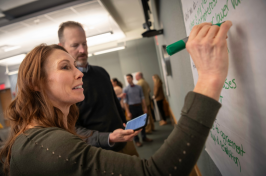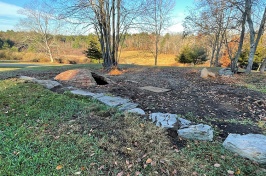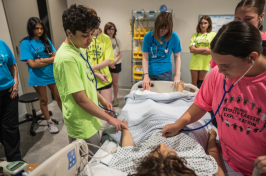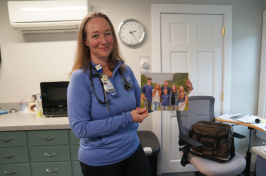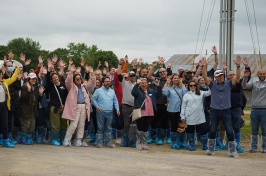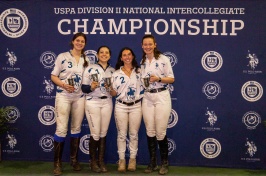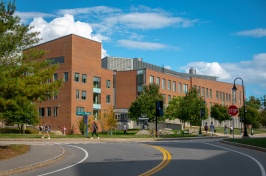UNH NHAES Scientists Tackle Climate-Related Challenges of Northeast Apple Growers

Orchards in the region currently experience isolated outbreaks, with growers that see bitter rot having about 3 to 5 percent of trees infected. Credit: Kirk Broders/NHAES
DURHAM, N.H. - The Northeast's increasingly erratic spring weather patterns are presenting new challenges for apple growers trying to manage diseases that can damage or destroy their crops. To help growers, scientists with the NH Agricultural Experiment Station at the University of New Hampshire have been fine-tuning the use of sophisticated weather models that have allowed them to successfully predict when an orchard is at risk for infection.
By using these predictive models, experiment station scientists have more accurately determined when fungicides and preventative measures should be undertaken. This has not only resulted in more successful management of diseases, but the more targeted approach has reduced the number of fungicide applications necessary and the amount of fungicides applied to orchards, thus cutting orchard management costs.
Scientists under the leadership of Kirk Broders, assistant professor of plant pathology, have been investigating two diseases that can infect apple orchards: apple scab, which is one of the most pervasive diseases of apples in the Northeast, and bitter rot, which has become more prevalent in the Northeast.
"We're trying to prepare for the future. As climate patterns veer from historic averages everywhere in the United States, we may see historical diseases become less common, the epidemiology of those diseases change, or new diseases appear. Most plant diseases are dependent on the pathogen being present, the host (apple trees) being present, and the proper climatic conditions being ripe. Climatic conditions mostly are related to temperature and moisture, usually relative humidity and rainfall. If those climatic conditions start to change, it can significantly change the epidemiology of the disease," Broders said.
Understanding how climate variability may affect diseases that infect apples is particularly important considering apples are one of the most valuable fruit crops in the country. In 2012, the nation's apple crop was valued at $3.1 billion, according to the National Agricultural Statistics Service.
Of the two diseases, apple scab is far more prevalent and is one of the most important diseases of apples in the Northeast. According to Broders, an orchard easily could have all of its trees infected with apple scab if the farmer does not apply a fungicide and manage the infection. With bitter rot, orchards in the region currently experience isolated outbreaks, with growers that see bitter rot having about 3 to 5 percent of trees infected.
With apple scab, Broders and his team know well how apple scab occurs as well as the conditions that lead to an infection: warm temperatures, high humidity, and rain. And the erratic spring rainfall that the region has experienced in the last decade means that in some years, orchards can be hard hit by apple scab outbreaks if there is a lot of rain, or experience hardly any apple scab during less rainy springs.
To address the erratic spring rainfall, Broders and his team have been working with RIMpro Cloud Service, an interactive decision support system for pest and disease management in fruit and wine production. Located in the Netherlands, RIMpro allows the Experiment Station scientists to use real-time weather data to predict when weather conditions will be ideal for a disease outbreak.
This approach differs from the conventional apple orchard management that usually involves spraying orchards once every seven days throughout the growing season with a mixture that protects the trees from apple scab as well as a post-infection fungicide.
"It is very expensive to spray when you don't need to as well as it's not really good for the apple. Consumers are becoming much more concerned about purchasing food that is grown in a more sustainable or organic way," Broders said. "What we're trying to do is apply fungicides only when we know an infection event is going to take place."
So far, the targeted fungicide effort that relies on the predictive modeling has allowed for the successful control of scab using an organic fungicide - potassium bicarbonate and sulfur - that Experiment Station scientists have used on orchards at the Woodman Horticultural Research Farm. They have reduced the number of times they have sprayed as well as the number of apple scab outbreaks.
The researchers know less about the basic infection process of bitter rot and the climatic conditions that will lead to an epidemic. They theorize that, like apple scab, a wet, warm spring may lead to earlier infections and that the infections start with the flower on the tree. Studies are under way to look at the infection process, and scientists are hopeful that predictive modelling also will be helpful in anticipating an outbreak of bitter rot.
Founded in 1887, the NH Agricultural Experiment Station at the UNH College of Life Sciences and Agriculture is UNH's original research center and an elemental component of New Hampshire's land-grant university heritage and mission. We steward federal and state funding to provide unbiased and objective research concerning diverse aspects of sustainable agriculture and foods, aquaculture, forest management, and related wildlife, natural resources and rural community topics. We maintain the Woodman and Kingman agronomy and horticultural farms, the Macfarlane Greenhouses, the Fairchild Dairy Teaching and Research Center, and the Organic Dairy Research Farm. Additional properties also provide forage, forests and woodlands in direct support to research, teaching, and outreach.
PHOTOS
http://colsa.unh.edu/applescab
Apple scab is one of the most important diseases of apples in the Northeast. An orchard easily could have all of its trees infected with apple scab if it does not apply a fungicide and manage the infection.
Credit: Kirk Broders/NHAES
http://colsa.unh.edu/bitterrot
Orchards in the region currently experience isolated outbreaks, with growers that see bitter rot having about 3 to 5 percent of trees infected.
Credit: Kirk Broders/NHAES
Latest News
-
October 24, 2025
-
October 8, 2025
-
October 2, 2025
-
September 24, 2025
-
September 15, 2025












